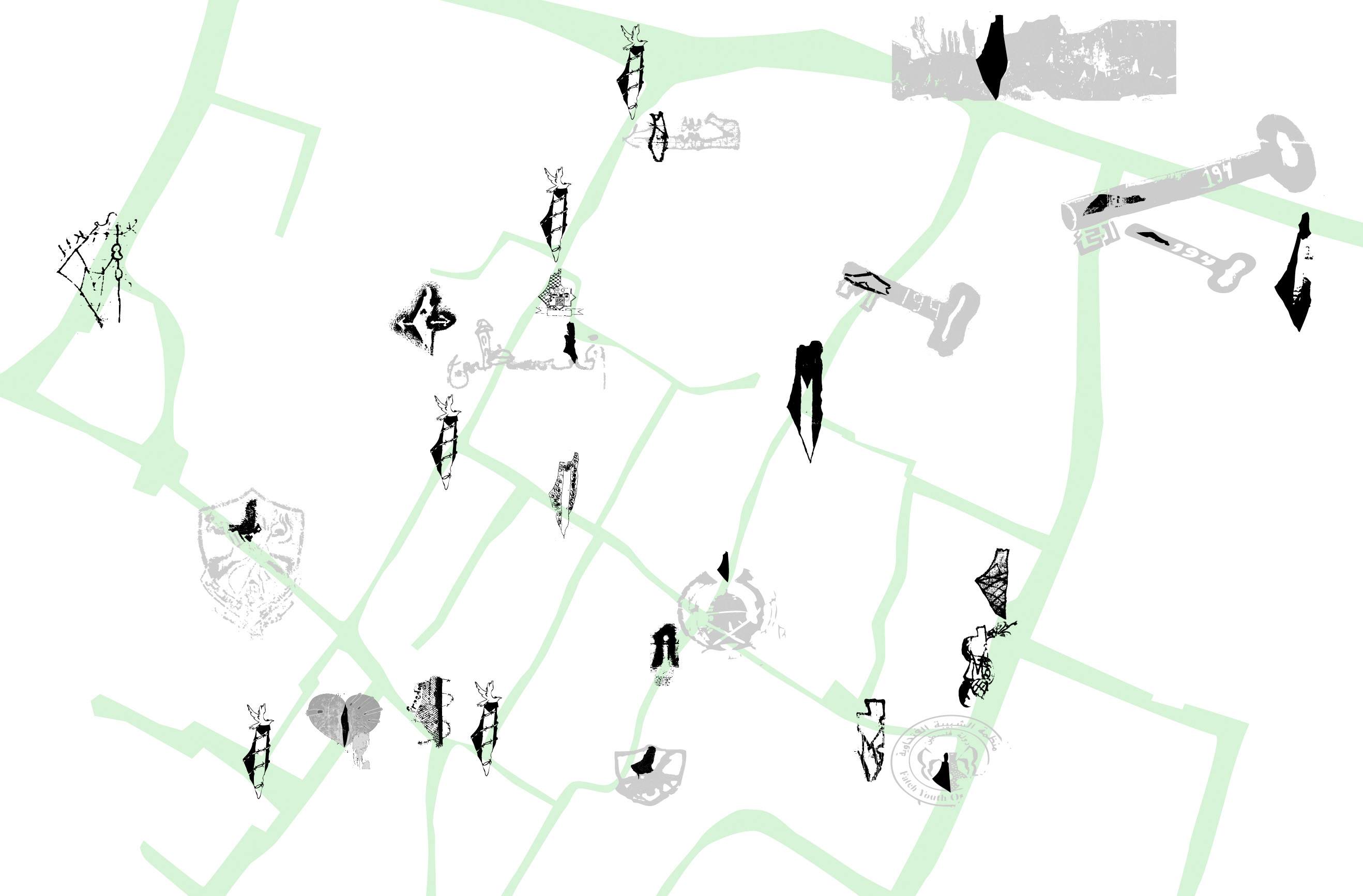They started out as tents, as one would suppose refugee camps would. A temporary space for people fleeing war.
But for many who have never seen a Palestinian refugee camp, it often comes as a surprise that camps consist of crowded buildings now rather than tents. A second, startling realization: the refugees have been here long enough to need all this concrete.
It took a few years for them to agree to houses, however. The first compromise was walls only—no roofs. Roofs implied permanence. But as families have grown, and as the camp’s spaces have not, roofs have been added—many roofs—most serving at once as a mother’s ceiling and her son’s family’s floor.
But anyway, these buildings are their houses, not their homes. Their homes are inside what became the State of Israel after their expulsion in 1948. And while the official maps want to tell them that it is impossible to go back home, those same maps also communicate that home is only walking distance away.
In Bethlehem’s Aida Refugee Camp, in the West Bank, I am learning to agree with a common Palestinian refrain: “The map here is useless.” The way the map tells the story, distance is space only, not time. And also not violence. Checkpoints and borders are lines and dots to travelers like me. For Palestinians, those same lines and dots are testament to the Israeli military’s brute force.
Outside of Lajee Center, a place I have been volunteering with at the Camp, there is a ceramic sign that announces that Al-Quds (Jerusalem) is 7.34 km away, about 4.5 miles. The sign is correct if we assume Cartesian space. Nidal, one of Lajee’s organizers, remembers when he and his friends would walk from Aida Camp to Al-Quds in the evenings to eat ka‘ak, sesame-covered ring-shaped bread, and could walk back home in time for bed.
That was before Israel closed off the city to most Palestinians years ago. Before the Second Intifada. Before the Apartheid Wall. Now, Al-Quds is too far, a distance impossible for most. Most do not qualify for special entry permits. It is what the ceramic signs like these, about 80 throughout the West Bank, provide reminders of in claiming the distance to Al-Quds: the map here is useless.
Nidal’s wife, Amahl, is a Palestinian citizen of Israel, and they hope he gets special permission to enter ’48 to visit her family. We once made a map of the permit maze, following him through various visits to different offices over several weeks, each of his movements taking him farther and farther, in the opposite direction. He was denied.
But from the refugees themselves, I am also learning the map is not always so useless. Every day, walking past the maps of Palestine they have painted and graffitied all over the Camp’s buildings, I learn to agree. They are the maps of Palestine before 1948, before the UN Partition, before the Peel Commission, before land settlement. Their Palestine maps have zero authority on the ground, but for the Zionist project, they are terrifying. This is how I can learn to agree with Aida’s refugees: the map is not always so useless.
Nidal and Salah at Lajee Center ask me to work with them on making some maps of Aida. I will learn some things about myself from this project. One, I had not known how to think of the map strategically before. When friends would ask what I was learning from my research on the map’s life in Palestine I’d often joke, “The map has ruined everything!” I’d laugh, but sometimes, I think I believed it. But no, it turns out that the map itself is not inherently bad or good. The map is part of a strategy. The question to be answered is, how and when to deploy it?

I am also learning that I am highly risk-averse. Fearful that Israelis might get a hold of the maps we make, I suggest that we should not make any.
“They already have the maps,” Salah says, reminding me of the military’s frequent night raids and arrests in Aida. It is how the soldiers know precisely which house to raid, he says. “When they arrest us they even show us the name of our house on their GPS.”
True, mapping would be a risk. But what does that mean in a place where sleeping in your own bed is a risk?
Nidal would like to map Aida’s lives of struggle, he says. He has many of these lives, Nidal does: his First Intifada life, his Second Intifada life. Once, when I asked him to check if I had traced the Camp’s streets accurately on the computer, he nodded but remarked, ‘‘You know, the rooftops are also streets.’’
Overlaying a sheet of translucent paper onto a printed aerial image of the Camp, Nidal dotted a road network on the roofs as he had maneuvered them while under curfew during the Second Intifada. He had needed to get around, but Israeli soldiers were guarding the streets. So he got around instead by jumping the rooftops.


Nidal’s was a map no amount of professional training could ever teach me to make. Placing my map of Aida’s streets next to his map of Aida’s other streets, I am reminded of Amilcar Cabral’s concept of “class suicide.” It was a proposal he put forth to the petty bourgeoisie: either they preserve their privileges and betray the revolution, or they begin identifying directly with the people by committing suicide as a class.
Cartographer suicide, maybe?
If Nidal had followed the streets as proposed by the professional map’s given wisdom, he might be dead today or imprisoned for breaking curfew. But Nidal did not follow the streets; he created his own, improvising each length, direction, and turn with each jump.
We talk about the mapping project in Aida and wonder what sharing these maps might do. We are not sure yet. Will allies in struggle know to read them for the significance we intend? We do not know. Will adversaries redeploy them back against the Camp? We hope not, but it is possible. Will some people hate us? Probably. But resisting entails risks.
As the Zapatistas propose: caminando preguntando, asking questions as we walk. Palestinians can show us the same, and that sometimes, we might have to ask those questions as we jump.
